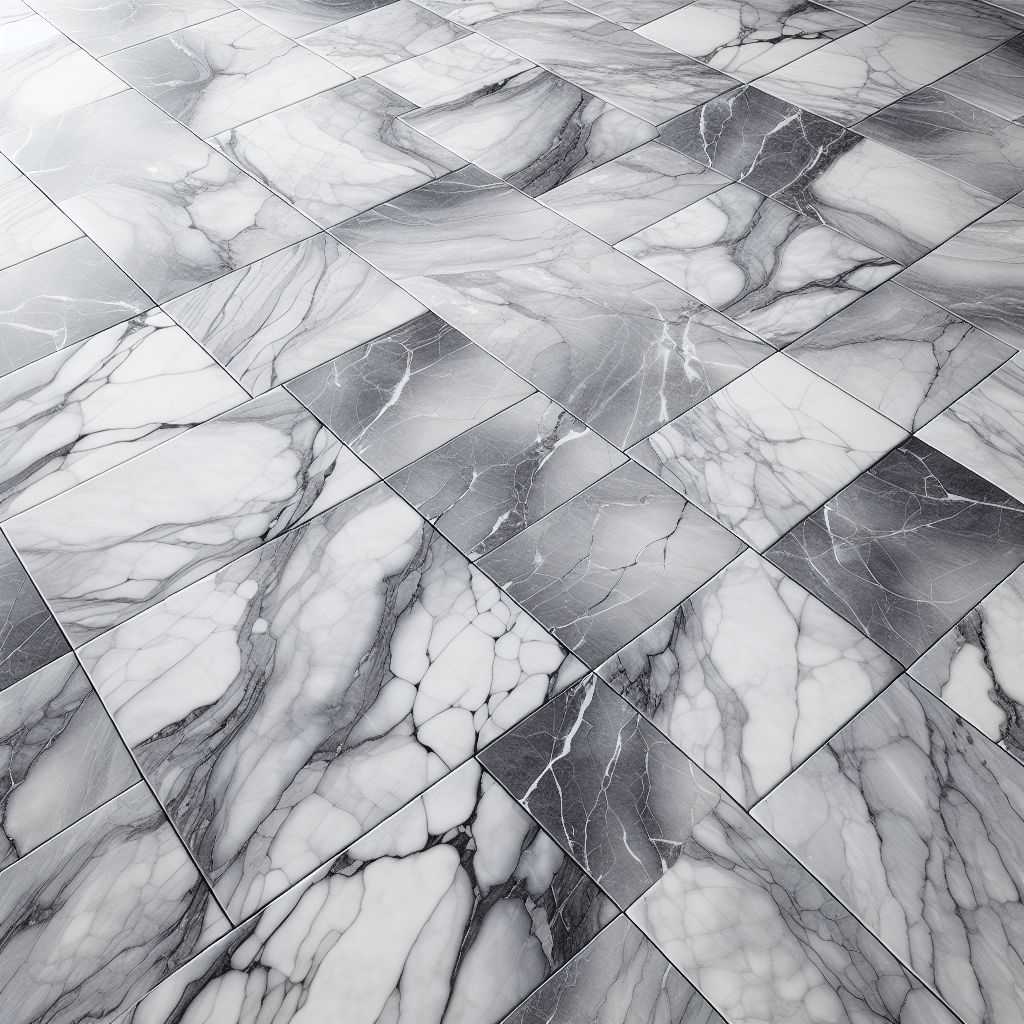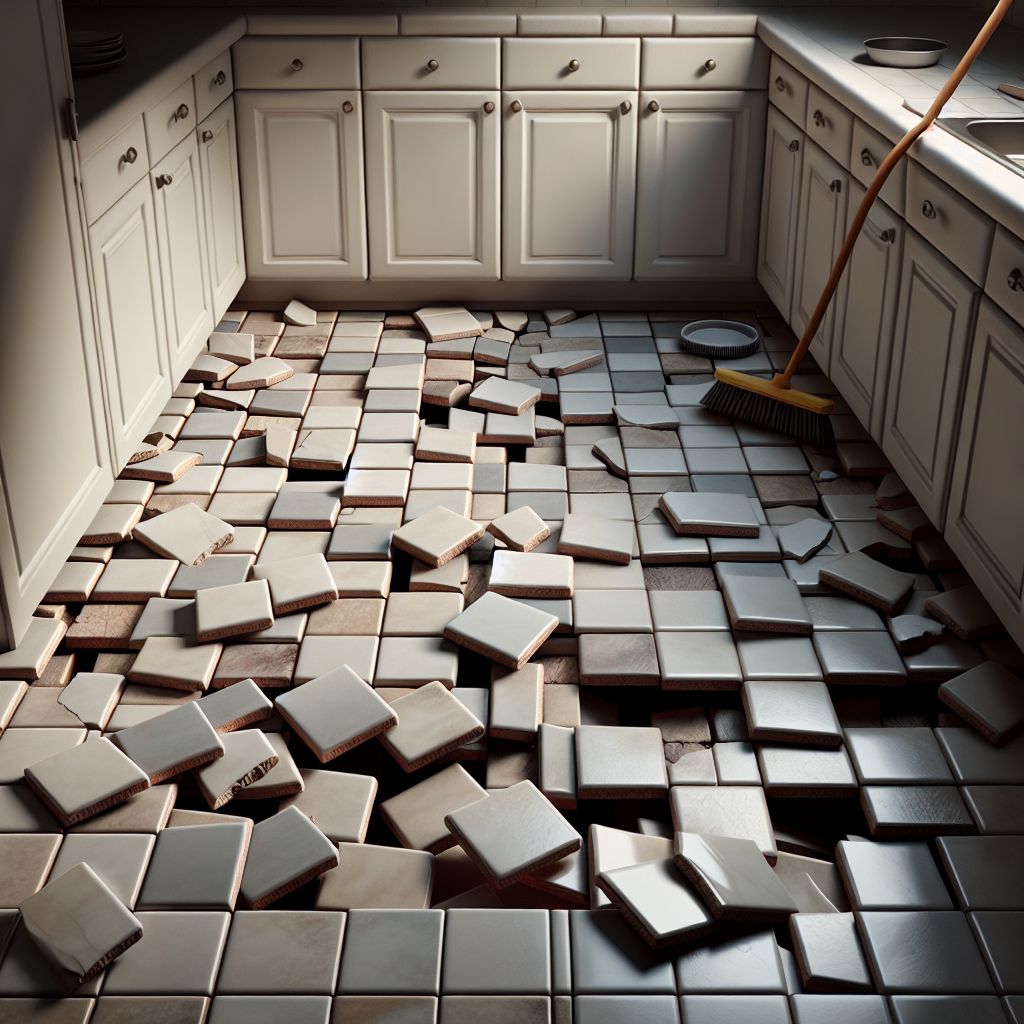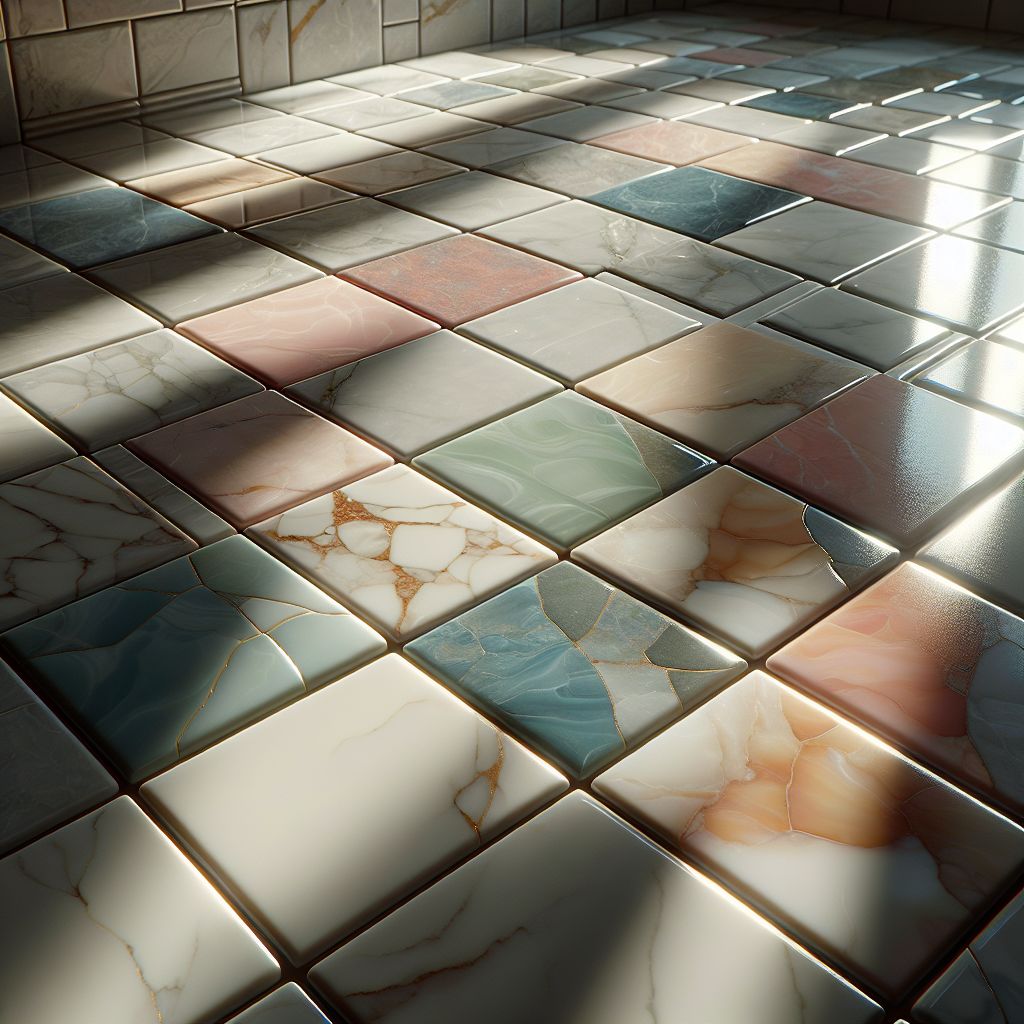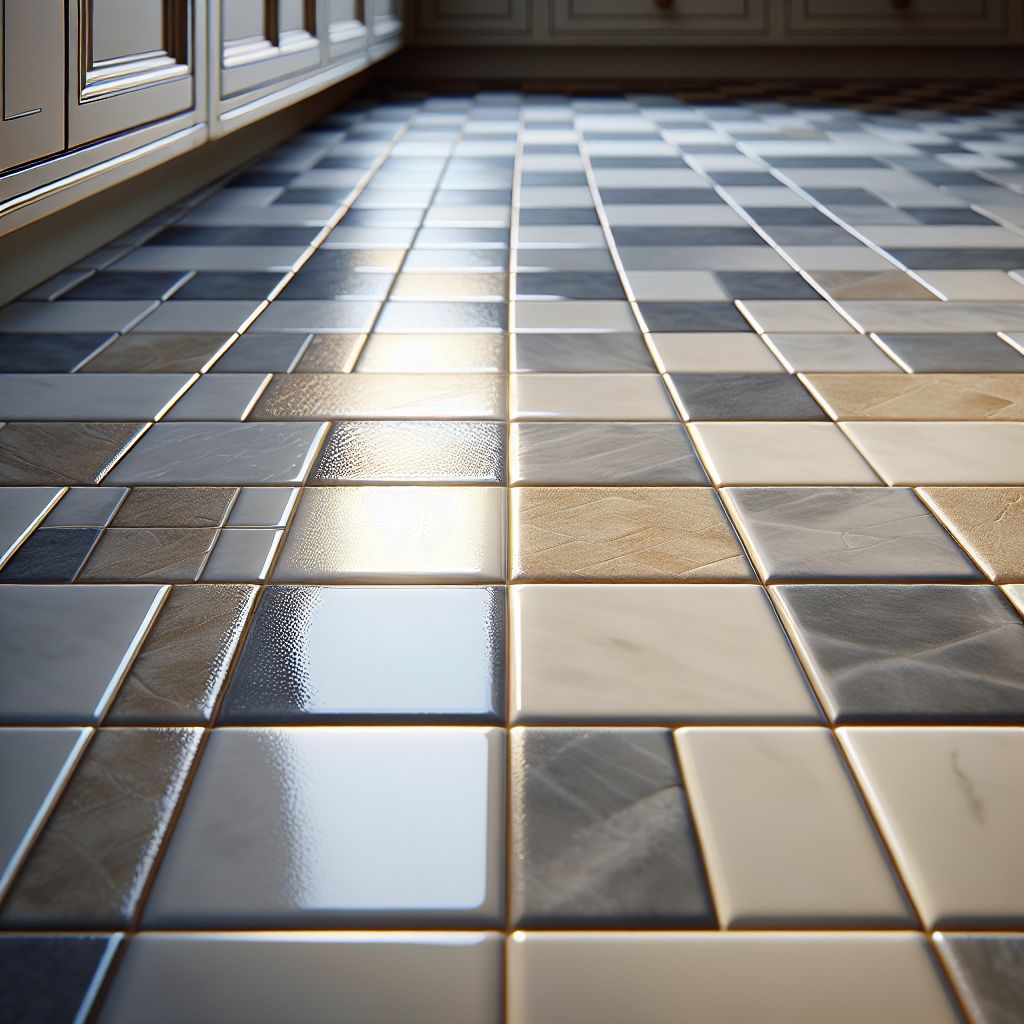
Key Takeaways
-
Refinishing porcelain tile flooring can breathe new life into your home without the expense of a full remodel.
-
Choosing to remodel with new porcelain tiles allows for a complete style overhaul but at a higher cost and longer timeline.
-
Comparing costs, refinishing is generally more affordable than a full remodeling project.
-
Maintenance and durability are key considerations when deciding between refinishing and remodeling.
Time to Shine: Porcelain Tile Restoration
When your porcelain tile flooring starts to lose its luster, it doesn’t necessarily mean a full renovation is in order. Often, a simple refinishing job can restore the shine and extend the life of your floors. Refinishing is a smart move if you’re looking for a cost-effective way to rejuvenate your space if the only issues are cosmetic.
The Age of Tiles: Recognizing When to Act
Before diving into any project, it’s critical to know when your tiles need attention. If you’re noticing dullness, surface scratches, or just an overall lack of brilliance, it’s time to consider a refresh. If you find your cleaning efforts aren’t as effective as they used to be, the protective glaze on your tiles might be wearing thin.
Dive into Refinishing Porcelain Tiles
Let’s break down the refinishing process. It starts with a deep clean to ensure the new finish adheres properly. Next, you’ll sand down any rough spots. After the prep work, you’ll apply a tile refinisher. This specialized product will give your floors a durable, glossy coat that makes them look brand new.
Step-by-Step Tile Refinishing Guide
-
Clean the tile thoroughly, removing all dirt and stains.
-
Repair any chips or cracks with a porcelain repair product.
-
Sand the surface gently to help the new finish adhere.
-
Wipe away all dust and debris.
-
Apply the refinisher evenly according to the manufacturer’s instructions.
-
Allow the refinisher to cure, avoiding foot traffic until it’s completely dry.
Creating a Lasting Shine: Best Practices
For a finish that lasts, be meticulous during each step. Ensure the tile is spotless before starting, and apply the refinisher in a well-ventilated area. Patience is key; don’t rush the drying process. This attention to detail will ensure a professional-looking result that withstands the test of time.
Now, let’s transition to the idea of a full remodel, which is a different beast altogether.

Breaking Ground: Introducing Porcelain Tile Remodeling
When refinishing isn’t enough to meet your aspirations, remodeling with new porcelain tiles can be the game-changer your home needs. Remodeling allows for a complete transformation, opening up a world of design possibilities. Whether it’s adopting a new color scheme or updating to a more modern tile size and shape, remodeling gives you the freedom to reimagine your space entirely.
When to Say Goodbye: Signs for a Tile Makeover
There comes a time when refinishing might not be enough. If you’re facing extensive damage, outdated designs, or you’re simply craving a change, it’s time for a tile makeover. Cracked tiles, persistent stains that can’t be cleaned away, or a desire to completely update the aesthetic are all valid reasons to embark on a remodeling journey.
Selecting Your New Porcelain Look
Choosing new porcelain tiles is an exciting step. Here’s what to consider:
-
The size and shape of the tiles can dramatically alter the room’s appearance.
-
Color choices should complement the overall design theme of your home.
-
Texture and finish—glossy, matte, or textured—can add depth and character.
Consider the room’s function, too. For example, slip-resistant tiles are ideal for bathrooms, while a high-gloss finish might be perfect for a less trafficked dining area.

Comparing Costs: Refinishing Versus Remodeling
Cost is often the deciding factor between refinishing and remodeling. Refinishing is more budget-friendly, with expenses largely limited to cleaning supplies, sanding materials, and the refinishing product itself. In contrast, remodeling costs encompass new tiles, installation labor, and potentially additional materials like backer boards or underlayment.
Analyzing Upfront Expenses
Let’s talk numbers. Refinishing a porcelain tile floor might cost a few hundred dollars, depending on the size of the area and the products used. Remodeling, however, can quickly escalate into the thousands. You’re looking at:
-
$5-$10 per square foot for mid-range porcelain tiles.
-
$5-$15 per square foot for professional installation.
-
Additional costs for demolition, disposal, and materials.
Long-Term Investment: Durability and Quality
Quality and durability are where porcelain tiles shine—both refinished and new. Porcelain is known for its hardiness, making it a long-term investment regardless of the route you take. However, a brand-new installation with the latest materials and technologies can offer a fresh start and potentially a longer lifespan for your floors.
But it’s not just about longevity. The choice also impacts your day-to-day life. A new floor can change the acoustics, feel, and even the temperature of a room. It’s important to weigh these subtle but significant quality-of-life changes when making your decision.
Now, beyond the upfront costs and quality considerations, there’s also the disruption to your daily life to consider. Let’s explore this further.
Picturing the Process: Refinish or Remodel?
Deciding between refinishing and remodeling isn’t just about cost and quality; it’s also about the process itself. Refinishing is less invasive, typically taking a few days to complete. Remodeling, on the other hand, can take several weeks and will likely disrupt your daily routine.
Comparing Aspects: Refinishing vs Remodeling
| Refinishing | Remodeling | |
| Cost | Starts at $5-$10 per square foot for mid-range porcelain tiles | Can quickly escalate to thousands of dollars |
| Timeline | Quick fix, may be completed after 48 hours | Takes longer, may take several weeks to be completed |
| Pros | Budget friendly, less disruptions to your routine | Offers more durability and quality, complete transformation |
| Cons | May not be applicable to high-gloss tiles or those with specialized textures, limited to fixing surface-level concerns | More invasive and causes more disruptions to daily routine, expensive |
| Longevity | Can last up to 10 years with proper maintenance | Lasts longer with the new and high quality materials |
Timeline Troubles: Understanding the Duration
Refinishing is a quick fix. You might be back on your floors in 48 hours. Remodeling? That’s a bigger commitment. You could be looking at days or weeks of workers in your home, noise, and dust. And if unexpected issues arise—like a subfloor that needs repair—the timeline can extend even further.
Matching Your Lifestyle: Functionality and Aesthetics
Consider your lifestyle when choosing between refinishing and remodeling. If you have a busy household, can you afford the downtime associated with a remodel? Do you have pets or children that would make a quick refinishing job more appealing? Aesthetically, do you prefer to maintain the existing charm of your home, or are you ready for a completely new look?
Whether you choose to refinish or remodel, think about the impact on your daily life and the end result you’re aiming for. Both options can significantly enhance the beauty and functionality of your home, but the right choice depends on your specific needs and desires.

Frequently Asked Questions
Got questions? You’re not alone. When it comes to making decisions about your home’s flooring, it’s natural to have a few queries. Here are some of the most common questions homeowners have when considering porcelain tile flooring refinishing or remodeling.
How long does porcelain tile refinishing last?
Porcelain tile refinishing can last for many years if done correctly and with the right products. Typically, you can expect a refinished porcelain tile floor to maintain its shine and protection for about 10 years. However, this lifespan can be shorter or longer depending on the amount of foot traffic and the care taken during and after the refinishing process.
Can all types of porcelain tiles be refinished?
Most porcelain tiles can be refinished, but it’s essential to consider the tile’s current condition and the type of finish originally applied. Some high-gloss tiles or those with specialized textures may not take to refinishing as well as others. Always check with the manufacturer or a professional before proceeding.
Is it worth investing in remodeling my porcelain tile floors?
Investing in remodeling your porcelain tile floors can be worth it if you’re looking for a complete change in design or if your current tiles are beyond repair. Remodeling allows you to update your home’s look, potentially increase your property’s value, and choose tiles that fit your current lifestyle and decor preferences.
What is the difference in maintenance between refinished and remodeled tiles?
Maintenance for refinished and remodeled porcelain tiles is quite similar. Both will require regular cleaning and occasional deep cleaning to keep them looking their best. However, remodeled tiles may have the advantage of newer technologies in sealants and finishes that could offer additional resistance to stains and wear.
Remember, whether you choose to refinish or remodel, regular maintenance is key to preserving the beauty and extending the life of your porcelain tile floors.
How does porcelain tile refinishing impact my home’s value?
Refinishing your porcelain tile floors can positively impact your home’s value by improving its overall appearance and appeal to potential buyers. A well-maintained and aesthetically pleasing floor can make a strong impression, which may translate to a higher resale value. However, the impact on value will also depend on market trends and the quality of the refinishing work.
In conclusion, whether you opt for refinishing or remodeling your porcelain tile flooring, the choice should align with your budget, design goals, and how you use your space. By considering the factors we’ve discussed, you’ll be well on your way to making an informed decision that enhances the beauty and functionality of your home.



